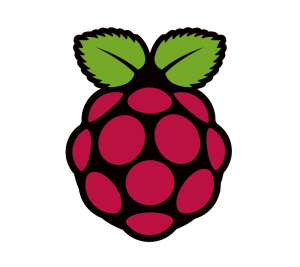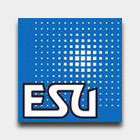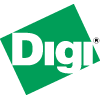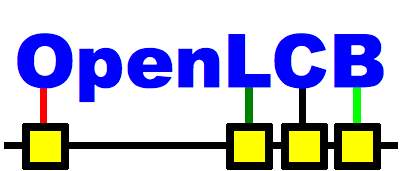- Supported Hardware
- Devices, command stations, networks, and protocols:
- Anyma DMX
- Arduinos
- Atlas Commander
- Bachrus
- BiDiB
- CAN Bus Networks
- CBUS®
- C/MRI
- CTI Electronics (Acela)
- CVP EasyDCC
- Dcc4Pc
- DCC-EX EX-CommandStation
- DCC++
- DCC Specialities
- Digi XBee
- Digikeijs / YAMORC
- Digitrax
- DMX 512 (Powerline)
- ESU ECoS
- Fleischmann
- Hornby
- Insteon (Powerline)
- LCC
- Lenz
- Lionel TMCC
- LocoNet
- Maple Systems
- Märklin CS2
- MERG
- Modbus
- MQTT
- MRC
- NAC Services RPS
- NCE
- Oak Tree Systems
- OpenDCC
- OpenLCB
- Pi Engineering RailDriver
- Powerline
- Protrak Grapevine
- QSI Quantum Programmer
- Raspberry Pi
- RFID Readers
- Roco
- SPROG DCC
- SPROG DCC Generation 5
- SRCP server
- TAMS Master Control
- TracTronics SECSI
- Uhlenbrock Intellibox
- Viessmann Commander
- Wangrow System One
- WiFi Throttles
- X10 (Powerline)
- XPressNet
- Zimo MX-1
- ZTC Controls
- Applications
- By the community of JMRI.org:
- Tools
- JMRI tools for working with your layout:
- Common Tools:
- Blocks:
- Routing and Control:
- Other:
- System-specific...
- Web server tools...
- Layout Automation
- Use JMRI to automate parts of your layout and operations:
JMRI: Hardware Support
JMRI supports a wide range of DCC "command station"-style products from various model railroad automation vendors. We also support non-DCC layout accessories and devices that connect via a variety of networks and protocols. This page lists hardware and networks that JMRI is known to work with, and provides links to information on how to configure JMRI to work with each particular type.
- Category/Alphabetical Index
- Hardware Supported:
- Additional Topics:
If there is a way to make a computer communicate with a given piece of model railroad equipment, it is possible to connect it to JMRI. If you don't see your particular system here, please ask about it on the JMRI users.
For developers adding new hardware integration: see here for information about Creating Help and Web Pages for New Hardware.
Category/Alphabetical Index
This index cross-references hardware and products by the categories under which they appear on this page. Click on a category to go to that category on this page. Click on a hardware item to go to the JMRI Help page for that product or family. Note the sidebar provides a single alphabetical list.
- Atlas Commander
- CVP EasyDCC
- DCC-EX EX-CommandStation< (arduino)
- DCC++< (arduino)
- Digikeijs (Digirails)
- Digitrax
- ESU ECoS
- Fleischmann
- Hornby
- Lionel TMCC
- Märklin CS2
- MERG
- MRC
- NCE
- Roco
- SPROG DCC
- SPROG DCC Generation 5
- TAMS Master Control
- TCS CS-105
- Uhlenbrock Intellibox
- Viessmann Commander
- Wangrow System One
- Zimo MX-1
- ZTC Controls
- Arduinos
- CTI Electronics (Acela)
- Digitrax
- IPOCSMR
- Lenz
- MERG
- Raspberry Pi
- SPROG DCC
- SPROG DCC Generation 5
Networks and Protocols:
Multi-purpose Hardware
- Manufacturer
- JMRI Support
-

- Arduino (micro-controller)
-
Configure: See the JMRI arduino help page for information on configuring for accessory control. See also DCC-EX EX-CommandStation for use as a DCC command station.

- CTI Electronics Acela
-
Configure: CTI Electronics boards via Acela adapter.
-

- Digitrax
-
General information on connecting JMRI to a Digitrax LocoNet
Configure: Connections to a LocoNet via
- Digitrax PR3 interface
- Digitrax PR4 interface
- RR-CirKits LocoBuffer-NG
- RR-CirKits LocoBuffer-USB
- The older LocoBuffer-II, LocoBuffer and MS100 interfaces
- Bluetooth LocoBridge
Configure: LocoNet Simulator for use when disconnected from a layout.
Configure: Remote connection to a LocoNet via LbServer. More information on connecting multiple computers to a single LocoNet
Configure: Programming and testing decoders without a command station via a Digitrax PR2 interface, PR3 interface, or PR4 interface.
Configure: Directly connecting to an Intellibox.
Configure: Connecting to a Standalone LocoNet.
-

- IPOCSMR
-
IPOCSMR is an Open Source Software implementation of an IP based interface to control
Model Railway objects such as points/switch motors, lamps and detectors. IPOCSMR is
designed using ESP8266 as the Wi-Fi link to the object controllers and Arduino UNO to
realize the direct object control. IPOCS interfaces JMRI utilizing MQTT and comprises
of an interface software running in the JMRI environment, an IP communication software
running in an ESP8266 and an object control software running in Arduino. Additional
information, system descriptions and software can be found on GitHub.
Configure: Connecting to a IPOCSMR system.
-

- Lenz
-
Please check the notes above for system specific restrictions on what JMRI can do.
-

- Raspberry Pi Foundation
-
General information on connecting to the Raspberry PI GPIO pins.
-

- SPROG DCC/ SPROG DCC Generation 5
-
General information on connecting JMRI to a SPROG programmer/command station
General information on connecting JMRI to a SPROG Generation 5 programmer/command station
Command Stations
- Manufacturer
- JMRI Support
-

- Atlas Commander
-
Configure: Atlas Commander via Lenz LI100, LI101F, LIUSB or GenLi XPressNet interfaces, ZTC Controls ZTC640 interface, or an XPA and Hayes compatible modem
Note: you can not program decoders with this configuration.
-

- CVP Products EasyDCC
-
Configure: EasyDCC command station via Serial or Terminal Server
-

- DCC-EX
-
Configure: DCC-EX EX-CommandStation - Open Source Arduino Command Station.
-

- DCC++
-
Configure: DCC++ Open Source Arduino Command Station.
-

- Digikeijs (Digirails)
-
Configure: DR5000
-

- Digitrax
-
General information on connecting JMRI to a Digitrax LocoNet
Configure: Connections to a LocoNet via
- Digitrax PR3 interface
- Digitrax PR4 interface
- RR-CirKits LocoBuffer-NG
- RR-CirKits LocoBuffer-USB
- The older LocoBuffer-II, LocoBuffer and MS100 interfaces
- Bluetooth LocoBridge
Configure: LocoNet Simulator for use when disconnected from a layout.
Configure: Remote connection to a LocoNet via LbServer. More information on connecting multiple computers to a single LocoNet
Configure: Programming and testing decoders without a command station via a Digitrax PR2 interface, PR3 interface, or PR4 interface.
Configure: Directly connecting to an Intellibox.
Configure: Connecting to a Standalone LocoNet.
-

- ESU
-
Configure connection to ECoS command station.
-

- Fleischmann Twin Centre
-
Configure: Twin Centre communications (LocoNet)
Configure: Fleischmann Z21 and z21 via Ethernet.
-

- Hornby
-
Configure: Hornby Elite via built in USB Port
Configure: Hornby Elite or Hornby Select via Lenz LI100, LI101F, LIUSB or GenLi XPressNet interfaces, ZTC Controls ZTC640 interface, or an XPA and Hayes compatible modem.
Please check the notes above for system specific restrictions on what JMRI can do.
-

- Lionel TMCC
-
Connection: Serial cable
Configure: TMCC Command Base
-

- Märklin CS2
-
Configure connection to CS2 Command Station 2.
- Märklin CdB CC-Schnitte
-
Configure connection to CdB CC-Schnitte Command Station 2.
-

- Model Rectifier Corp (MRC)
-
MRC decoders can be configured via DecoderPro using any supported DCC system.
For more information on connecting JMRI to the MRC command station, see the MRC system page.
-

- NCE
-
Configure connection to a Powerhouse Pro via serial link or Terminal Server.
Configure connection to a PowerCab via NCE USB adapter. -

- Roco
-
Configure: Roco LocoMaus 2 (Roco Part number 10760), Roco MultiMaus (Roco Part number 10810), or Roco multiZENTRAL-Pro (Roco Part number 10830) via Lenz LI100, LI101F, LIUSB or GenLi XPressNet interfaces, ZTC Controls ZTC640 interface, or an XPA and Hayes compatible modem.
Please check the notes above for system specific restrictions on what JMRI can do.
Configure: Roco Z21 and z21 via Ethernet.
-

- SPROG DCC/SPROG DCC Generation 5
-
Configure: SPROG as either a stand-alone DCC programmer or DCC command station
Configure: SPROG Generation 5 as a DCC command station and programmer
-

- TAMS
-
Configure connection to TAMS Master Control command station.
-

- TCS
-
Configure connection to the TCS CS-105 command station.
-

- Uhlenbrock
-
The Intellibox can be connected to JMRI programs either via a LocoNet connection, or
via its own built-in serial (RS232) port or USB connection.
Configure: Uhlenbrock Intellibox-I or -II via LocoNet interface
Configure: Uhlenbrock Intellibox-I via built-in serial port
Configure: Uhlenbrock Intellibox-II via built-in USB connection
-

- Viessmann (XPressNet)
-
Configure: Viessmann Commander via Lenz LI100, LI101F, LIUSB or GenLi XPressNet interfaces, ZTC Controls ZTC640 interface, or an XPA and Hayes compatible modem.
Please check the notes above for system specific restrictions on what JMRI can do.
- Wangrow
- Wangrow
-
Connection: Wangrow Serial Port
Configure: System One
-

- ZIMO
-
Configure: ZIMO MX-1
-

- ZTC Controls
-
Configure: ZTC Controls ZTC511, ZTC Controls ZTC521 via Lenz LI100, LI101F, LIUSB or GenLi XPressNet interfaces, ZTC Controls ZTC640 interface, or an XPA and Hayes compatible modem (requires XPressNet V3.0 software).
Please check the notes above for system specific restrictions on what JMRI can and cannot do.
Networks and Protocols
- Manufacturer
- JMRI Support
-

- BiDiB
-
Configure: BiDiB networks
- C/MRI
- C/MRI
-
Configure: Bruce Chubb's C/MRI control system for a connection via direct serial, USB-serial adapter, or network connection.
-

- Digi XBee
-
General information on connecting to a Digi XBee network
-

- IPOCS
-
IPOCS, short for Internet Protocol Object Controller System, is an Open Source protocol
that is based on the FFIS TCC-OCS protocol for communication between wayside rail
objects and a Traffic Control Centre. The FFFIS TCC-OCS specification is part of
ERTMS-R.
Configure: Used for IPOCSMR.
-

- LocoNet (Digitrax)
-
General information on connecting JMRI to a Digitrax LocoNet
Configure: Connections to a LocoNet via
- Digitrax PR3 interface
- Digitrax PR4 interface
- RR-CirKits LocoBuffer-NG
- RR-CirKits LocoBuffer-USB
- The older LocoBuffer-II, LocoBuffer and MS100 interfaces
- Bluetooth LocoBridge
Configure: LocoNet Simulator for use when disconnected from a layout.
Configure: Remote connection to a LocoNet via LbServer. More information on connecting multiple computers to a single LocoNet
Configure: Programming and testing decoders without a command station via a Digitrax PR2 interface, PR3 interface, or PR4 interface.
Configure: Directly connecting to an Intellibox.
Configure: Connecting to a Standalone LocoNet.
- CBUS
-
Configure: CBUS networks

- Modbus
-
Configure: Modbus networks

- MQTT
-
Configure: MQTT networks
-

- NAC Services
-
Configure connection to an RPS (Railroad Position System) position detection system.
-

- OpenLCB
-
Configure: OpenLCB networks
-

- SRCP
-
Configure: Connection to SRCP server
- X10
- X10
-
Connection: X10, Insteon power-line controllers
Configure: CM11, 2412S and compatible controllers.
Programmers
- Manufacturer
- JMRI Support
-

- Digitrax
-
General information on connecting JMRI to a Digitrax LocoNet
Configure: Programming and testing decoders without a command station via a Digitrax PR2 interface, PR3 interface, or PR4 interface.
-
- QSI Solutions
-
Connection: Quantum Programmer
Configure: USB connection
QSI decoders can be programmed with DecoderPro through any DCC system. JMRI can't load sounds into QSI decoders.
-

- SPROG DCC/SPROG DCC Generation 5
-
Configure: SPROG as either a stand-alone DCC programmer or DCC command station
-
Configure: SPROG as DCC command station and programmer
Accessories and Other Devices
- Manufacturer
- JMRI Support
-

- Arduino (micro-controller)
-
Configure: See the JMRI arduino help page for information on configuring for accessory control. See also DCC-EX EX-CommandStation for use as a DCC command station.
-

- Bachrus
-
Configure: Bachrus MTS-DCC Model Train Speedometer
- DCC4PC
- DCC4PC
-
Configure: DCC4PC detection boards
- https://www.dccspecialties.com
- DCC Specialties
-
Configure: Hare, Wabbit, Block Watcher or PSX family products.
-

- KPF-Zeller
-
Configure: KPF-Zeller Model Train Speedometer
-

- Maple Systems
-
Maple Systems touch panel
Configure: connection via serial link

- Oak Tree Systems
-
Configure connection to Oak Tree's Railroad Control Interface (RCI), including the IO-24, IO-48 and O-48 interface cards and HH-2 handheld throttle.
- RailDriver
- PI Engineering
-
Configure: RailDriver cab simulator
-

- ProTrak
-
Configure: Grapevine nodes
- SECSI
- TracTronics
-
Configure: TracTronics SECSI connections
Hardware Manufacturer Index
This section cross-references hardware manufacturers and products that are known to work with JMRI. See above for links to specific help pages.
[TBA]
Connecting to Command Stations
General hardware info
- Turnout feedback
-
If your layout uses some feedback mechanism to sense the actual positions of Turnouts, for example a microswitch connected to the throw bars or a decoder that returns a confirmation message, JMRI can use that to keep track of what's actually happening on the layout. We call this "Feedback", and how to configure and use it is described on the Turnout Feedback page.
- PDA [Deprecated]
-
A way to use a PDA to access JMRI.
CBUS® is a registered trade mark of Dr Michael Bolton